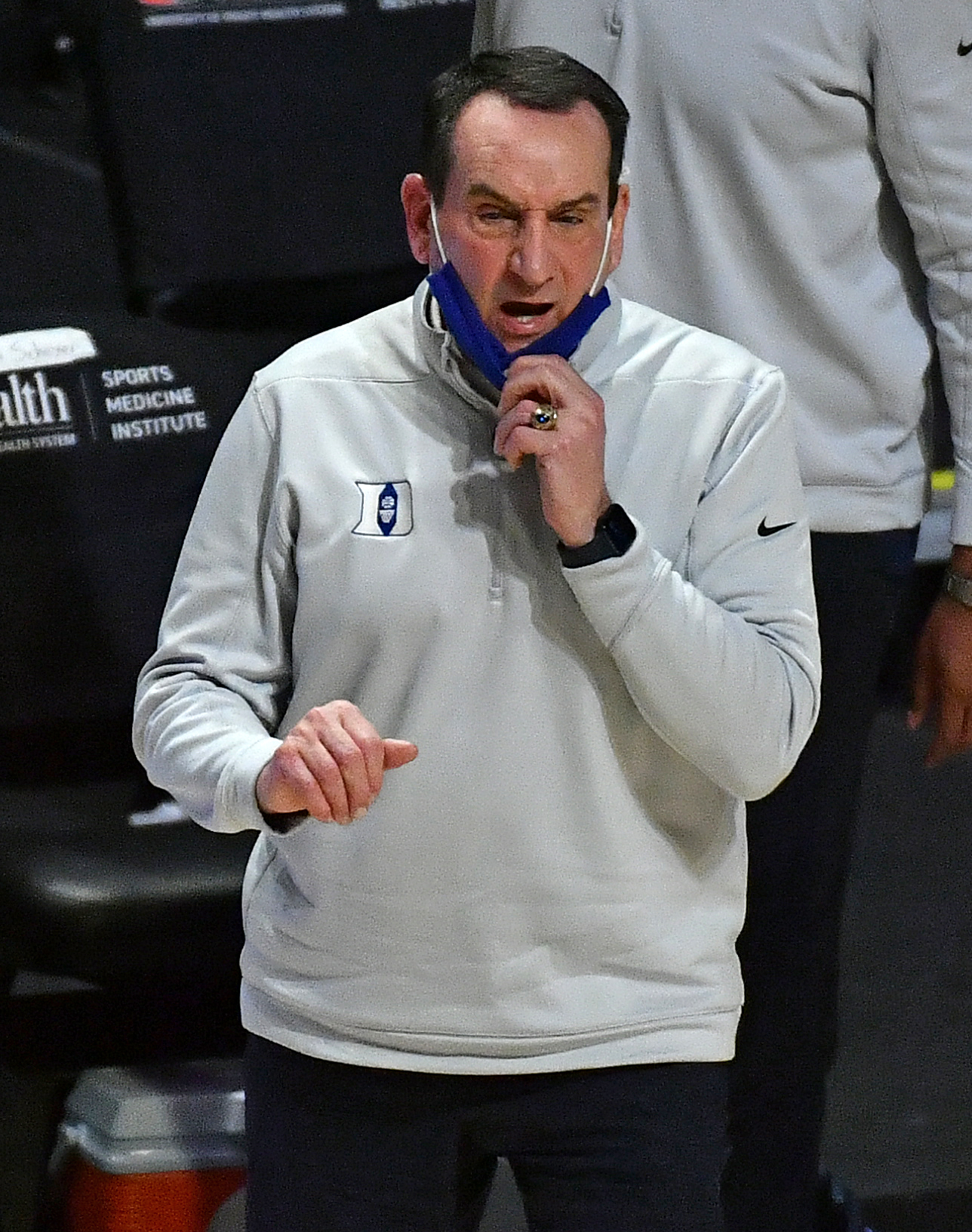
NCAA Tournament bracket preview: Where have the bluebloods gone?
By SDS Staff
Published:
When the NCAA Tournament revealed its bracket for the first time Saturday, giving fans an early look at the potential top-16 seeds, the list was missing a name.
Or two.
Or, well, a bunch.
Where are the bluebloods?
Over the last 30 years, dating to Jerry Tarkanian and the Runnin’ Rebels of UNLV’s championship in 1990, only 2 of the period’s NCAA title teams were represented in this year’s top-16: Virginia, the champion when the tournament was last played in 2019, and Villanova, which won in 2016 and 2018.
No Duke, which has 5 titles during the span; no North Carolina, winner of 4; no Kentucky, which has 3 championships. UConn has 4 titles since ’90, but it was not in the top-16 now. Two-time winner Florida? Nope. Kansas? No. Michigan State? Nada. Syracuse, Arizona, UCLA, Louisville? No, no, no, no.
So how did we get here, with nearly all of the traditional powers finding themselves on the outside of a top-4 regional seeds, and with some so borderline that they might even be on — or maybe even off — the bubble.
And, maybe more importantly, does it matter?
Let’s start there. It does matter. Every story needs a villain. And there might be no greater sports story every spring than the NCAA Tournament, where plots build every week, with heroes and Cinderellas and goats, all earning their 15 minutes of fame or shame.
But we watch for the Evil Empires, too. Outside of folks in Durham, N.C., who wasn’t cheering for gentle giant Tacko Fall and UCF to take down scowling Mike Krzyzewski and Duke in the second round of the last tournament? (Which seems like no less than about 10 years ago, by the way). Who doesn’t want to see a referee’s call go against Tom Izzo, only to watch steam rise out of the head of the Hall of Fame coach? Does anyone watch Kentucky to see John Calipari win?
Nah, we hate-watch. Look at this list …
1. Gonzaga
2. Baylor
3. Michigan
4. Ohio State
5. Illinois
6. Villanova
7. Alabama
8. Houston
9. Virginia
10. West Virginia
11. Tennessee
12. Oklahoma
13. Iowa
14. Texas Tech
15. Texas
16. Missouri
Of the top 16 — the final bracket is revealed on Selection Sunday March 14 — who are we supposed to collectively despise? Alabama? Houston? Are we just hoping Fran McCaffery hits Francon 1 sometime during the second weekend?
The NCAA Tournament is better when the top-flight programs are at the top, challenged — and maybe even beaten occasionally — by a directional school in Maryland. At least there will be a tournament this year, presumably, but the lack of fans won’t be the only reason it’ll feel so different. The lack of Duke certainly would, too.
How this is happening all in the same season is a more difficult question to answer. Duke is 8-8 overall, 6-6 and staring up at most of the ACC. It’s in danger of not making the NCAA Tournament for the first time since 1996.
Michigan State, which was ranked No. 4 in the country this season, is 10-8 overall, but only 4-8 in the Big Ten. It lost by 30 Saturday to Iowa. The Spartans will need to beat good teams in the last month of the season to get an NCAA bid, and they’ll have chances in the loaded Big Ten, but it seems unlikely.
Kentucky is 6-13 overall, 5-7 in the SEC after edging an average Auburn team Saturday. The Wildcats sit in the bottom half of the league. Heck, if there were a CIT this season — there isn’t, thank goodness — Kentucky wouldn’t even be good enough to play in it.
The trio doesn’t lack talent. Kentucky and Duke were ranked No. 1 and No. 3 in 247Sports’ ranking of recruiting classes in 2020. (Michigan State, with only 2 signees, was only 8th in the Big Ten). The year before, they were 2nd (Kentucky), 3rd (Duke) and 26th (MSU). It 2018, it was a ranking of 1 (Duke), 2 (Kentucky) and 17 (Michigan State).
Maybe each, on its own, has an explanation. Duke took a COVID break in the nonconference, pausing activities before resuming at the start of the ACC season. It hasn’t found its footing.
Perhaps this was bound to happen at some point to Kentucky, when its latest group of heralded freshmen and underclassmen wouldn’t live up to expectation.
Izzo’s Spartans don’t have a center or a point guard, not a good way to win in the Big Ten, which is loaded at each of those positions. Heck, MSU’s best center is probably only the 17th-best in a league that has 14 teams. That’s a problem.
But it, like the issues at Duke and Kentucky, can be corrected quickly.
So this is all — probably — a blip, one that will feel long gone a year from now. But still, add it to the list of reasons why this March won’t quite feel like the typical March. And that’s a shame.
Saturday Down South reports and comments on the news around the Southeastern Conference as well as larger college football topics.







